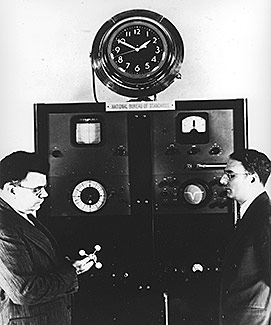
Many technologies that we take for granted rely on atomic clock accuracy, including mobile phones, Global Positioning System (GPS) satellite receivers, and the electric power grid.Ītomic clocks fundamentally altered the way that time is measured and kept. The societal impact of atomic clocks has been immense.

NIST visitors can normally pass through security if sponsored by a NIST employee. This site is approximately 18 miles (29 km) away from the site of invention by car, but will allow NIST employees and visitors who pass through security to view the plaque. The area is regularly patrolled by security/police officers.Ī duplicate copy of the plaque will be mounted in the lobby of the Administration Building at the National Institute of Standards and Technology in Gaithersburg, Maryland (100 Bureau Drive, Gaithersburg, MD, 20899). The site is publicly accessible in an outdoor location. How the intended plaque site is protected/secured There will also be a duplicate plaque on the NIST campus for NIST employees to view. The plaque is mounted outdoors on a bronze stand. Foreign Missions, State Department) Details of the physical location of the plaque Left to right: Tony Ivanov, Sherrie Lyons, Carl Williams, Clark Nguyen, Kent Rochford, Back Row: Steve Jefferts, Chris Oates, Mike Lombardi, Cliff Seagroves (Director, U.S. The columns make up the border of another little park, also owned by the U. One remaining piece of the old National Bureau of Standards (NBS) campus remains, a pair of stone columns that once served as an entrance to the NBS campus (see photograph below from Google Maps, the two columns are circled in the photo). This is where the original Radio Building was located (see text below regarding original building site), 4000 Connecticut Avenue NW, Washington, DC Street address(es) and GPS coordinates of the Milestone Plaque Sitesīeside the sidewalk on the west side of Connecticut Ave, NW between Van Ness and Tilden Streets, Washington, DC. Atomic clock accuracy made possible many new technologies, including the Global Positioning System (GPS). Far more accurate than previous clocks, atomic clocks quickly replaced the Earth’s rotational rate as the reference for world time. The first atomic clock, developed near this site by Harold Lyons at the National Bureau of Standards, revolutionized timekeeping by using transitions of the ammonia molecule as its source of frequency. 7 Features that set this work apart from similar achievements.5 How the intended plaque site is protected/secured.4 Details of the physical location of the plaque.3 Street address(es) and GPS coordinates of the Milestone Plaque Sites.On average, Earth has been slowing down a bit over the past decades, so UTC is currently running 37 seconds behind TAI. Before the difference between the two scales reaches 0.9 seconds, a leap second is added to UTC. For this reason, UTC is constantly compared to UT1. On the other hand, TAI does not take into account the variations in Earth's rotation speed, which determines the true length of a day. On the one hand, accurate time-keeping is a necessity, for example for time-sensitive technology, such as modern air traffic control systems that rely on satellite navigation. The high level of precision achieved by using atomic clocks is both a blessing and a curse. The time scale is weighted, prioritizing the time signal provided by institutions that maintain the highest quality of primary cesium.

To achieve the highest possible level of accuracy, the International Bureau of Weights and Measures combines the output of about 400 atomic clocks in 69 national laboratories worldwide to determine TAI. If TAI is so precise, why use leap seconds? If one could see an atomic fountain, it would resemble a water fountain.

The International System of Units (SI) defines one second as the time it takes a Cesium-133 atom at the ground state to oscillate exactly 9,192,631,770 times.Ītomic clocks are designed to detect this frequency, most of them today using atomic fountains a cloud of atoms that is tossed upwards by lasers in the Earth's gravitational field. The secret to this impeccable precision is the correct measurement of the second as the base unit of modern time-keeping. Atomic clocks deviate only 1 second in up to 100 million years. International Atomic Time is an extraordinarily precise means of time-keeping. It is used to compare the pace provided by TAI with the actual length of a day on Earth.


 0 kommentar(er)
0 kommentar(er)
